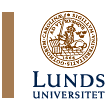

|
Panel No. 19Panel Title: Merging the unsuitable? Brittish India and Burma 1850-1948Convenor: Tilman
Frasch, Manchester Metropolitan University, UK Thursday 8 July, 8–12 Panel Abstract: Historians working on British-India tend to overlook that Burma was part of the Indian Empire for more than 80 years, from 1852 to 1937. This panel attempts closer looks into the unequal and sometimes difficult relationship between the two from both sides, bringing together for the first time historians specializing on either Burma or India. We would like to invite papers covering a wide range of topics such as political relations, the debates around separation in the 1930s and the relationship between the INC and the Burmese national movement, the flow and exchange of ideas in the fields of politics and religion, economic dependencies and cooperation, social contacts, migration and company histories, mutual perceptions and representations, the impact of WW II and the formation of separate identities on the frontiers of both countries. Papers referring to an earlier period may come into consideration as well, though the late 18th century would form a definite lower limit for the panel. It is intended to publish the proceedings of the panel in book form; further details including deadlines will be discussed during the conference. Read
the convenor’s panel report after the conference
Papers accepted for presentation in the panel:Paper Giver 1: Dr Swapna Bhattacharya (Chakraborti), Reader & Head of the Department, South & Southeast Asian Studies, Calcutta University, Kolkata, India Paper 1 Title: A Close View of Encounter between British Burma and British Bengal (1886-1937) Paper Abstract: This paper highlights the close contact between British Bengal and British Burma throughout the period from 1886 to1937. While the existing historical research upholds the strategic, political and economic importance of Bengal for the province of Burma, I am going to show the other side of the coin. The people of Bengal came close to Burma as they shared many common experiences in the field of religion, culture, beliefs, material life etc. Apart from that, to understand properly the spirit of this Bengal-Burma encounter during the given time period (1886-1937), one has to take note of the fact that before the rise of Islam (13th c), the regions of northern Bengal and Bihar were ruled by the Buddhist kings of the Pala Dynasty (9th-12th. c). Buddhist centres of South-Eastern Bengal under the Khadgas, Devas and Chandras (7th-13th c) stood in close interaction with the Buddhist kingdoms of Arakan and Burma. Both, the centres of Bihar, especially Bodhgaya, and those (Salvanvihar and Mainamati) in the modern districts of Comilla, and Chittagong (modern Bangladesh) maintained intensive contact with Burma, Pagan in particular. This Buddhist heritage of Bengal may be a matter of the past today. Apart from a small pocket of the Buddhists living in the Chittagong Hill Tracts of Bangladesh and some Buddhist Barooahs from Chittagong kiving in Calcutta, Buddhism cannot be said to be a living religion in Bengal. Nevertheless Buddhism has left its legacy (Sufism, Baul sects, Vaishnavism and other egalitarian schools) in the kind of Hinduism as well as Islam that Bengal practice today. Full paper to be downloaded (as a pdf-file) Paper Giver 2: Dr Tilman Frasch, Manchester Metropolitan University, UK Paper 2 Title: Burmese Buddhists and the Land of Bodhi Paper Abstract: The annexation of Arakan in
1783 brought the Burmese kingdom into direct contact with India,
and the Burmese used this opportunity to revive their former links
with the homeland of the Buddha. In a time when knowledge about
Buddhism had almost become extinguished in India among Indians,
let alone the western colonialists, the Burmese had little difficulty
in identifying sacred sites (most notably Bodhgaya where soon repairs
were to be carried out) or search for religious manuscripts. At
the end of the 19th century, the newly established Mahabodhi Society
provided another forum for Burmese Buddhists to become interested
in Indian affairs. Paper Giver 3: Andrew Huxley , SOAS London, UK Paper 3 Title: Bombay to Rangoon: The Anglo-Indian Legal Attitudes of John Jardine (1844-1919) Paper Abstract: A recent article uses John
Jardine's stay in Burma as a case study in legal Orientalism'. In
this paper I shall use it as a case study in the effect of Anglo-Indian
legal attitudes on Burma. Jardine's time in Burma was brief: though
he held the post of Judicial Commissioner from 1878 to 1884, he
was on furlough in London for two of those years. For the fourteen
years up to 1878, Jardine had worked his way up the Bombay civil
service, specialising in the Judicial side. By the time he went
to Burma, he embodied Anglo-Indian legal attitudes: he mixed Jeremy
Bentham's utilitarian principles of government, with Henry Maine's
propensity to over-generalisation in legal history and Mountstuart
Elphinstone's attitudes to custom. It is sometimes assumed that
Anglo-Indian attitudes to law and state were the same as English
attitudes. In fact there was a deep hostility between, on the one
hand, Jardine and his fellow bureaucrat-judges (the Anglo-Indians)
and, on the other hand, those Inns of Court-trained lawyers who
joined the I.C.S. as judges, having practised as barristers at the
Bombay bar (the English). Paper Giver 4: Alexey Kirichenko, Institute of Asian and African Studies, Moscow State University, Russian Federation Paper 4 Title: Social changes, new identities and political activism in colonial Burma and India (c. 1880-1948) Paper Abstract: The paper offers an outline
of social history of colonial Burma against the background of developments
which took place in India. My objective was to investigate and compare
the social consequences of British rule for Burma and India, thus
ascertaining to what extent the colonial experience was shared or
divergent. To put it in other words, I’ve tried to evaluate
if the merging of Burma into British India contributed to convergence
of its social systems with Indian ones or vice versa. Full paper to be downloaded (as a pdf-file) Paper Giver 5: Dr Jacques Leider, EFEO Yangon, Myanmar/Burma Paper 5 Title: Specialists for ritual, magic and devotion: the Court Brahmins of the kings of Arakan and Burma Paper Abstract: The presence of Brahmins at
the courts of the Theravada Buddhist kings of Southeast Asia is
a well-known fact. It is generally acknowledged that they played
an essential part in the ritual of king making (ablution ceremonies,
abhiseka) and that they acted as court astrologers. Their functions
were thus related to the transmission and the practice of a special
knowledge basically imported from India. In a way, the court Brahmins
represent a living heritage of India and the continuity of their
presence can be seen as a secular link with India. But though they
always formed a distinctive social group in a host society, they
became integrated in a way that estranged them from their roots.
Paper Giver 6: Shobna Nijhawan, University of California, Berkeley, USA Paper 6 Title: "We and They": A Hindi feminist ethnography on Burmese women Paper Abstract: In 1918, the female political
activist Rameshwari Nehru visited Burma to hold a series of lectures
on social reforms and women's education in front of Burmese social
reformist and women's organizations. As the founder of the Prayag
Mahila Samiti (Women's Assembly, Allahabad) and editor of the women's
journal Stri Darpan (Women's Mirror) from 1909 to 1924, Rameshwari
Nehru was a popular figure in the Hindi public sphere of the early
twentieth century. She scrutinized mainstream male-dominated nationalist
politics and added a feminist perspective to the political discourse. Paper Giver 7: Dr Jörg Schendel, Humboldt University Berlin, Germany Paper 7 Title: Economic relations between Burma and India in the Nineteenth Century Paper Abstract: In the study of international economic relations since the nineteenth century, the focus has very often been on the position of the industrialized core of the “world-economy” with Asia and other peripheral areas. Less attention has been paid to intra-regional relationships of exchange and their consequences for economic development. The paper will seek to highlight the division of labor between India and Burma as it emerged in the course of the nineteenth century and to create a clearer picture of the role both countries played for each other’s development. The focus will be on the trajectories of bilateral trade, which will be linked to data on the domestic economic development. Paper Giver 8: Md. Mohiyuddin Md. Sulaiman, International Islamic University Malaysia, Selangor Paper 8 Title: Burmese Muslims’ perception of Indianic Identity of Islam Paper Abstract: Muslims are minority in Burma
and constitute approximately 15 to 20 percent of total fifty million
inhabitants of Burma (or today Myanmar). They are again divided
into few sub-groups transforming into minority of minorities. Basically
there are three Muslims major groups such as Rohingyas, Burmese
(native) Muslims and the Indian (migrant) Muslims. Paper Giver 9: Dr Sean Turnell, Macquarie University, Sydney, Australia Paper 9 Title: Cooperative Credit in British India and Burma Paper Abstract: Cooperative credit was the
British Empire's all-purpose answer to problems of rural poverty
and indebtedness, usury, and land alienation. Originating in the
idealism of the 'Rochedale Pioneers' and in schemes from rural Germany,
cooperative credit was imported into India with an evangelical zeal
to solve all manner of perceived economic and social ills. With
only slightly less moral fervour it was transplanted from India
into Burma in the first decade of the Twentieth Century, and by
1920 several thousand cooperative credit societies had mushroomed
across the country. Full paper to be downloaded (as a pdf-file)
Panel report:
|

